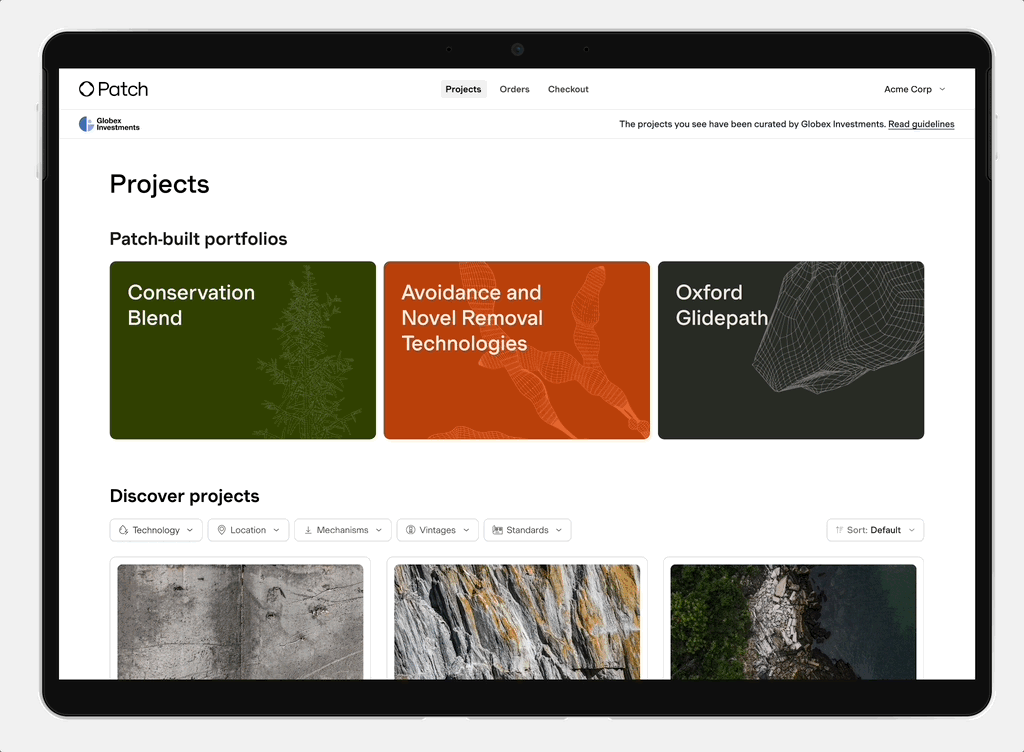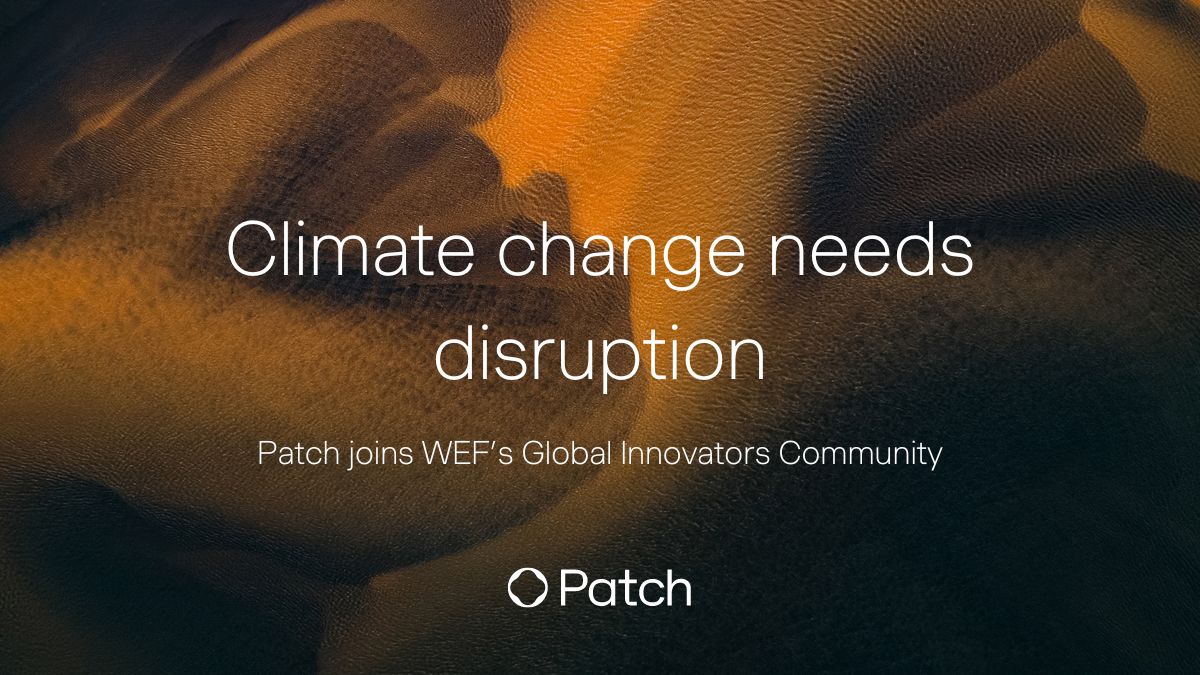Get the guidebook: Building high impact carbon credit portfolios
In the collective race to save the planet from climate change, companies are purchasing carbon credits to drive funding toward projects that will ensure a livable future. Developing and scaling a variety of projects is critical to creating the best chance for success, but it also makes it difficult for carbon credit buyers to navigate the nuances of different project types.
Some types have been operational for decades, including forestry and renewable energy. In recent years, new technologies have emerged that bring novel approaches to carbon avoidance and removal.
Direct air capture (DAC) works to absorb CO2 from the air and sequester it into rocks or oil. Mineralization advances techniques to absorb CO2 into rocks that can then be buried, or used as a fertilizer substitute. In the natural world, seaweed sinking tests new ways to leverage the ocean to act as a carbon sink, while other pioneers are using genetic engineering to accelerate plant growth and enhance natural carbon absorption.
And ever-improving technology is bringing new levels of scientific rigor to traditional approaches, like better measurement, reporting, and verification (MRV) for forestry projects.
Altogether, innovation creates new potential for the voluntary carbon market (VCM): potential for stronger and more accurate measurement. Potential for solutions that remove carbon for hundreds to thousands of years. Potential to scale a market that has been limited in its growth by traditional certification processes.
Unfortunately, that potential can be curbed by the complexity that arises from so many different options. And when you factor in all the information a buyer needs to understand (like how a project is externally verifying its carbon impact, and how variables like vintage — the year the climate impact takes place — affect a project’s potential to create lasting benefits), it gets even more complicated.
So how should you navigate the market? Increasingly, climate action pioneers are leveraging a technique familiar to the financial services industry: portfolios. Buyers construct a balanced mix of projects, which allows them to diversify their investment and hedge against any potential risks while also distributing important funds across a mix of developers.
In this article, we’ll explore how portfolios can mitigate risk and create greater potential for impact, as well as how to simplify the process of building one.
How portfolios amplify impact
Financial portfolios are generally collections of financial investments like stocks, bonds, commodities, cash, and cash equivalents. Investors maycan vary their portfolio using other factors as well, such as the industry in which the investment operates, the geographic location, or whether the investment pays dividends. A portfolio provides diversity, so that if one investment underperforms, its impact is countered by the other investments. This reduces the impact in case any investment underperforms, and generally helps deliver better financial returns over a longer term period.
You’ve likely seen financial portfolios visualized as a pie chart, where different investments are shown as slices. Some portfolios can be more aggressive but risky, while others are safer but with lower upside. Spreading out an investment allows you to tune where on that spectrum you want to invest.



The exact same theory applies to portfolios of carbon credits. Patch works with buyers to craft unique portfolios that fit their climate goals and risk thresholds. For example, Credit Suisse curated a portfolio comprising cutting-edge credits including concrete injection, bio-oil, and afforestation.
This is where we come back to complexity: a buyer using a portfolio approach would need to gather information and diligence for not just one project, but many.
Because portfolios can be so effective both from a risk management perspective and from a climate impact perspective, Patch wanted to make the process much more streamlined. That’s why Patch built Portfolios: a mechanism for buyers to quickly and easily purchase curated groups of credits at specified price per tonne. These projects come from Patch’s global and growing network of over 160 projects across 23 technologies.
“We researched a number of carbon removal partners, but none rivaled Patch when it came to transparency and knowledge. Patch isn’t just a carbon credit marketplace, they’re experts in the space.”
Marlot Kiveron, Head of Sustainability at Otrium
[Read case study]
Patch Portfolios: Diversifying Climate Action
Here’s how simple it is to take a portfolio approach with Patch:
Patch helps drive greater impact while staying on budget: Many buyers have a specific budget and need to purchase a set of credits aligned either to an average price per tonne or a lump sum. Portfolios help you stay on budget while still being able to contribute to more expensive cutting-edge projects.
Patch helps you reduce risk by diversifying your climate action: Portfolios make it simple to purchase sets of credits from a range of project developers. Each project meets Patch’s rigorous project acceptance criteria with verification and ratings data easily visible in the platform.
Patch makes it fast: In moments, a buyer can purchase credits from multiple developers in a single transaction. Our climate experts have put in the rigor so you can take advantage of a portfolio approach with only a few clicks.
Patch makes it transparent: You can see the exact weighted percentage of where each dollar goes, or get granular details on each individual project, like technology, credit type, geography, and more.
Patch helps the market scale: Novel projects tend to be more expensive than traditional projects because they have not reached critical scaling capacity. Portfolios help buyers invest in these novel approaches, but balanced with traditional projects to reduce your price per tonne.
Patch supercharges networked climate action: This past spring, we released our Radius product to scale climate action through your business’ networks, clients, supply chain, or investment companies. Portfolios can supercharge the exponential effect of networked climate action by spreading even more funding across even more projects.
Curated Portfolios give carbon credit buyers confidence and ease
Patch has now launched portfolios into our platform. They’ve been constructed by our climate experts, and align to the leading types of climate commitments.
We’ve launched three portfolios providing a spectrum of pricing across a range of technologies.
- Conservation Blend: This conservation-focused portfolio emphasizes nature-based projects that use a variety of solutions to mitigate carbon emissions. This portfolio is focused on both avoidance and removal projects, including biodiversity conservation and forest protection, and in addition, this portfolio allocates 30% of your climate contribution to nature-based removals including reforestation and revegetation.
- Avoidance and Novel Removal Technologies: This hybrid portfolio offers a 50/50 blend of avoidance and removal projects. In addition to supporting conservation, reforestation, and revegetation projects, this portfolio supports novel technologies including biochar and ocean-based carbon removal.
- Oxford Glidepath: The Oxford Glidepath Portfolio is designed with the Oxford Principles in mind, with over 15% long-lived projects, and all projects have a removal component. The Oxford Principles for Net Zero Aligned Carbon Offsetting from Oxford University is a universally referenced resource outlining different types of carbon credits, and how the role of each should evolve over the long-term. The importance of nature-based and energy efficiency approaches will gradually reduce, and as cutting-edge technologies scale, they’ll further integrate. Credits are differentiated on two axes: (1) emission reductions vs removal, and (2) short- vs. long-lived storage. Storage (or “durability ”) is a critical consideration, as it is necessary to consider not only whether emissions are avoided and removed, but also how long the climate impact persists. When designing an Oxford Glidepath climate strategy, it’s important to balance your purchase across avoidance and removal projects, as well as storage duration.
Each portfolio presents useful information that can help buyers make a choice that best aligns with their climate commitments and budgets. In addition to showcasing full project information, Patch portfolios show additional details for projects, including:
- Technology summary: A diagram that visualizes the mix of technologies used.
- Mechanisms: The mix of avoidance and removal.
- Credit types: The year of impact of the credits, i.e. whether they are already issued, will be issued in the current year, or will be issued at a future vintage.
- Additional information on a project basis: Ratings from BeZero or Sylvera, as well as which registry a project will be retired on.
We will continue to develop new pre-made portfolios and make these available to Patch customers. We’re also able to create custom portfolios to meet specific initiatives or requirements. And as with any purchase on the Patch platform, portfolios are built with a contracting structure that protects against delivery risk.

You can watch Lauren Frisch, Climate Trust Lead at Patch, showcase the Patch approach to portfolio construction in an on-demand webinar here. Lauren guides you through Patch's comprehensive methodology, which takes into account crucial factors such as mechanism, technology, vintage, geography, and pricing.






